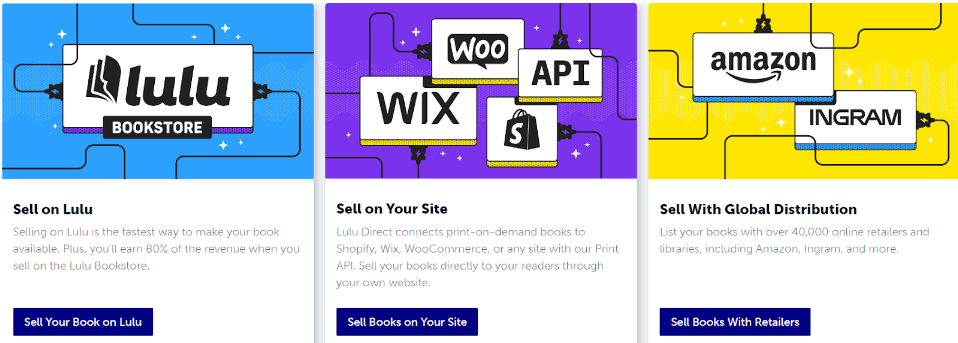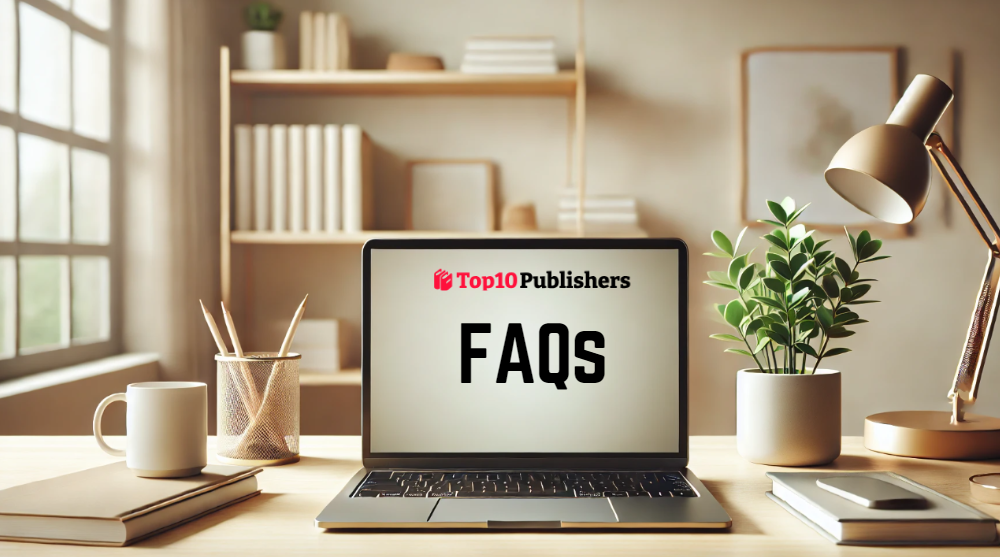- Clara Barr
- 0 min read
Lulu Publishing: Pros, Cons, Features and Insights
Table of Contents
In this article, we take a comprehensive look at the services offered by Lulu Publishing, providing a detailed review of what makes this platform a popular choice for independent authors and small publishers. We’ll break down the range of tools and resources Lulu offers, highlighting their strengths and the areas where they fall short.
Whether you’re looking to understand how their print-on-demand and distribution services work or considering if their approach fits your publishing needs, this article will guide you through the key advantages and potential pitfalls of using Lulu Publishing. Our goal is to help you make an informed decision.
Overview of Lulu Publishing
Lulu is an online print-on-demand, self-publishing, and distribution platform founded in 2002. By 2014, Lulu had issued approximately two million titles, establishing itself as a significant player in the self-publishing industry. The platform’s mission is to empower authors to publish and distribute their work globally without the need for traditional gatekeepers, offering greater control and accessibility to independent creators. Lulu primarily targets independent authors, small publishers, and creators who seek to sell their books both online and in physical stores, catering to various publishing needs and preferences.
| ✅ PROS | ⛔ CONS |
| Affordable Publishing Option High Royalties No Minimum Orders Global Distribution Retain Rights | Only Basic Production Tools No Marketing Services Learning Curve Inconsistent Print Quality Limited Brick-and-Mortar Presence |
✅ Pros of Lulu Publishing
Affordable Self-Publishing Option: Lulu is free to use for book creation and distribution.
High Royalties: Authors retain 80% of gross profits for print sales and 90% for ebooks.
No Minimum Orders: Allows authors to print as few or as many copies as needed.
Global Distribution: Books can be made available on Amazon, Barnes & Noble, and other online retailers.
Retain Rights: Authors maintain all rights and copyrights to their work.
⛔ Cons of Lulu Publishing
Only Basic Production Tools: While Lulu offers effective distribution and print-on-demand services, they provide only very basic publishing production tools such as formatting, cover design, or proofreading.
No Marketing Services: Lulu does not provide any marketing services, leaving promotion up to the authors.
Learning Curve: New users may find the platform complex initially.
Inconsistent Print Quality: Some authors have reported inconsistent print quality.
Limited Brick-and-Mortar Presence: Difficult to get books stocked in physical stores due to print-on-demand economics.

Overview of Services
Ultimately targeted at ready-to-print authors, Lulu provides tools for authors to create and publish both print and digital books themselves. This includes tools and guides to formatting and cover design, and DIY step-by-step publishing instructions. However, there are no real production services available. Every step of the production process from formatting and cover design to editing and proofreading needs to be completed before being able to utilize Lulu’s distribution services.
Print-on-Demand Options
Allows authors to print books only when orders are placed, eliminating the need for large upfront printing costs and inventory management. This service is cost-effective and ensures that authors are not left with unsold copies.
eBook Creation and Distribution
Offers services to convert manuscripts into eBook formats and distribute them globally. This includes distribution to major eBook retailers like Amazon Kindle, Apple iBooks, and more.
Marketing and Promotional Services
Limited to basic tools such as listing on the Lulu bookstore and optional global distribution. Significant marketing and promotional efforts are required from the authors themselves, as Lulu does not provide extensive marketing services.
Author Support and Resources
Provides various guides, calculators, and customer support to assist authors throughout the publishing process. This includes detailed help articles, video tutorials, and access to a support team for troubleshooting and guidance.
9.5
8.4
Pricing and Packages
Lulu’s platform is free to use. Printing fee costs are based on a base price that covers raw materials and printing. Authors earn a profit from their book sales after these production costs are deducted.
- Overview of different packages available: The platform is free to use for basic publishing services, with optional paid services available for authors who need additional support such as cover design, editing, and enhanced distribution.
- Comparison of costs for various services: Costs include printing fees, distribution fees, and any additional services authors may choose to purchase. Authors can use the cost calculators provided by Lulu to estimate their expenses.
- Additional fees and hidden costs: While Lulu’s pricing is generally transparent, authors should be aware that costs can accumulate based on the services and distribution options they select.
Lulu offers high royalty rates (80% for print books and 90% for ebooks) and free basic services, which provide good value for independent authors looking to maximize their earnings while maintaining control over their publishing process.
Publishing Timeline
The publishing process on Lulu involves several steps, starting with the upload of the manuscript, followed by formatting and design. Authors then select distribution options and finalize the book details before the book undergoes review and approval. Typically, it takes 6-8 weeks for a book to receive global distribution approval, though this timeline can vary based on factors such as manuscript preparation, the efficiency of approval processes, and the schedules of distribution partners.
To expedite the publishing process, authors should ensure their manuscript is polished and error-free, adhere closely to Lulu’s formatting and submission guidelines, and respond promptly to any queries or issues that arise during review and approval.
9.5
8.4
Royalties
Lulu’s royalty structure is designed to benefit authors by allowing them to earn a significant percentage of the profits from their book sales. After production costs are deducted, authors receive 80% of the profit for printed books and 90% for ebooks. This structure provides higher royalty rates compared to many traditional publishers, who often offer significantly lower percentages.
To calculate royalties on Lulu, the formula is Profit = Sale price – Production costs – Lulu’s commission. For printed books, Lulu takes a 20% commission on the profit, while for ebooks, the commission is 10%. The remaining profit is what the author earns.
To maximize royalties, authors should consider setting competitive prices that attract buyers while still covering costs. Utilizing Lulu’s global distribution options can increase sales by making the book available on major online retailers. Additionally, effective promotion is crucial; authors should leverage social media, author websites, and other marketing channels to boost visibility and drive sales.

Distribution
Lulu’s distribution network includes major retailers such as Amazon and Barnes & Noble, allowing authors to reach a broad audience. The platform supports both print and digital distribution channels, making it possible to distribute physical books and ebooks. Lulu offers global distribution, ensuring that books can be purchased internationally. Authors are also able to sell their books on the Lulu Bookstore. Partnerships with bookstores and online retailers enable books to be listed on major bibliographic databases, increasing visibility and availability. While the distribution fees are transparent, it is important for authors to understand the cost structure associated with different distribution options to make informed decisions.

Customer Experience and Reviews
Lulu receives mixed customer feedback, reflected in its 3.9/5 star rating on Trustpilot. While some users appreciate reasonable prices and highlight the platform’s effectiveness through positive case studies and testimonials, others report significant issues. Common complaints and issues reported by users include hidden fees, poor customer support and services, inconsistencies in print quality, and a lengthy and confusing distribution process.
Additionally, the platform can be complex for new users to navigate, which adds to the frustration for some authors. Despite the praise from some users, the trend of similar concerns indicates a varied user experience.

Is Lulu Publishing for You?
Lulu Publishing is well-suited for independent authors and small publishers who already have a polished, print-ready book and are primarily seeking print-on-demand (POD) and distribution services. Its flexibility and affordability make it an attractive choice for those who prefer to maintain control over the publishing process and have the skills or resources to handle tasks like cover design, formatting, and editing independently.
One of Lulu’s main strengths lies in its extensive distribution network, which allows authors to reach a global audience through various online retailers. The platform is also user-friendly, providing straightforward tools for setting up projects and offering a cost-effective solution for quickly getting books into the market.
However, Lulu might not be the best fit for authors who require more comprehensive production services, as it lacks support for professional cover design, editing, and formatting. For those focused primarily on physical bookstore sales or in need of strong marketing support, Lulu’s offerings may fall short.
Before choosing Lulu, it’s essential for authors to have a solid marketing plan in place and to feel comfortable managing the publishing process independently.
For the most up-to-date information on services, pricing, and publishing timelines, it’s crucial to visit Lulu’s website directly.
Best Alternative to Lulu Publishing…
For authors seeking a self-publishing alternative that delivers exceptional value, Spines stands out. Spines provides a self-publishing platform that integrates advanced technology with human expertise, supporting eBooks, audiobooks, and print-on-demand formats. It offers global distribution, marketing tools, and 100% royalty retention, with three pricing packages and a monthly payment plan. Read our in-depth review here to find out more.

FAQs – Lulu Publishing
Q: Is Lulu a completely free service?
Lulu offers free basic publishing services, but authors must pay for copies they order and any additional services like cover design, editing, or marketing.
Q: How to get started with Lulu?
To begin publishing with Lulu, create an account on their website, upload your manuscript, and follow the step-by-step instructions to format and design your book. Choose your distribution options and set your pricing.
Q: Are there any deductions from my earnings?
Once you start earning from the sales of your books, a 20% (print books) or 10% (ebooks) fee will go to Lulu.
9.5
8.4